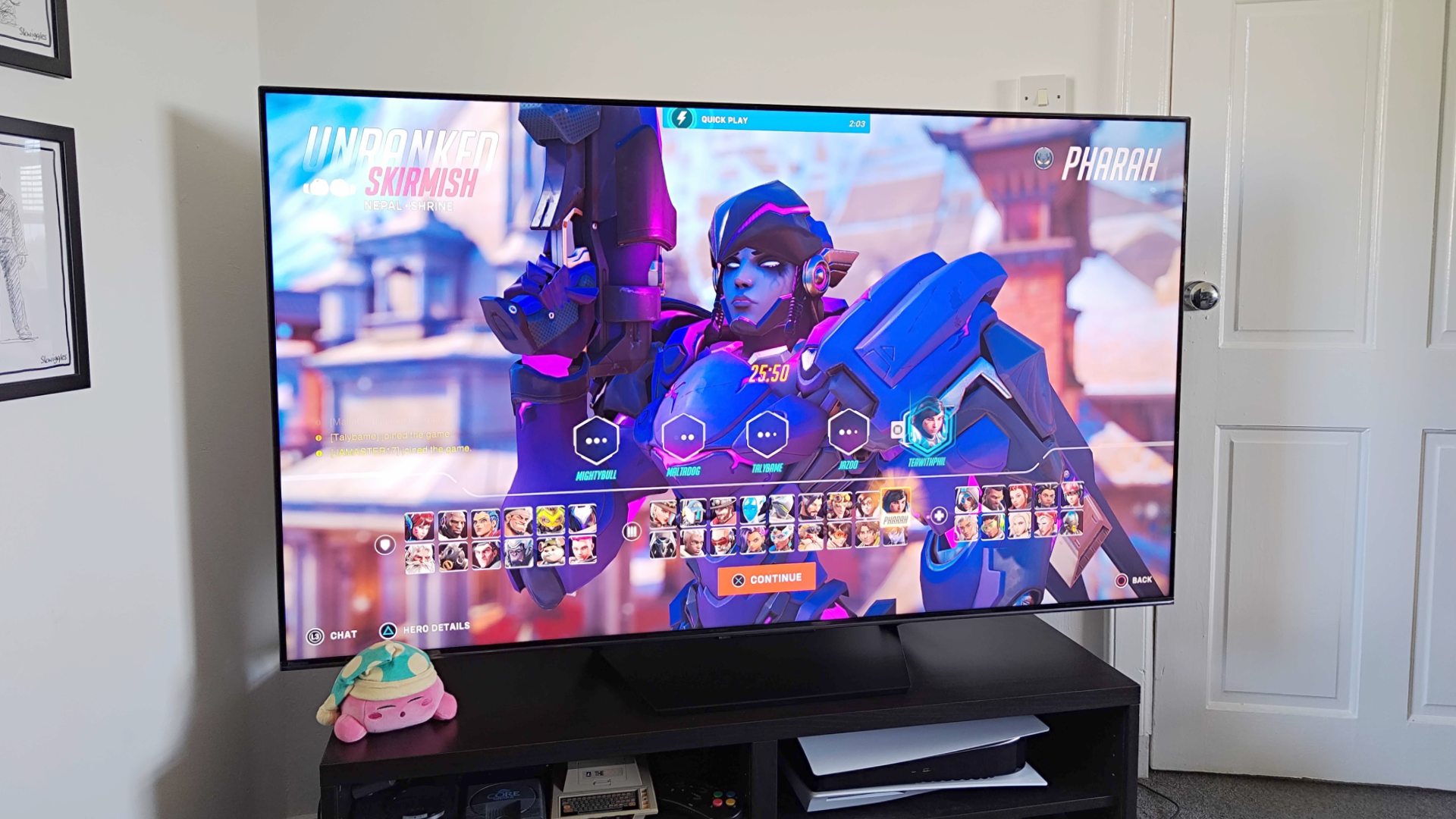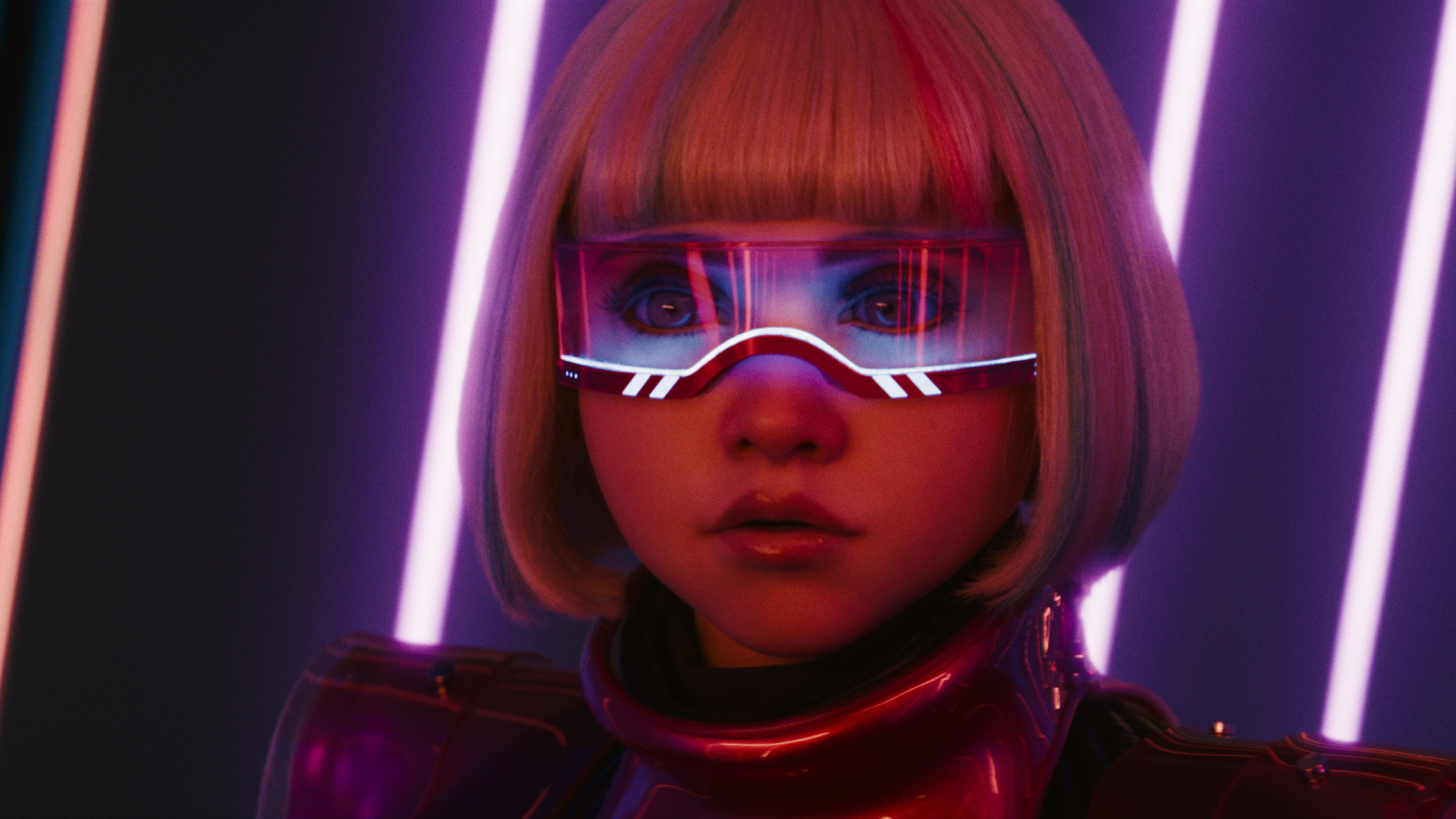GamesRadar+ Verdict
The Hisense U7N strikes a great balance between price and gaming TV performance, and its 144Hz mini LED panel is out to impress. While it doesn’t quite punch above its mid-range weight in terms of 4K upscaling and HDR, this display will deliver exceptional visuals when paired with a console or PC.
Pros
- +
Speedy 144Hz visuals
- +
Great 4K visuals
- +
Super bright
Cons
- -
HDR is average
- -
Upscaling could be better
- -
Pedestal stand is needlessly bulky
Why you can trust GamesRadar+
Mini LED gaming TVs are going from strength to strength, and the Hisense U7N is a testament to that fact. The tech still has a long way to go before it’ll truly land a punch on OLED panels, especially when it comes to delicious contrast and colors. But, when it comes to affordable PC and console performance without much compromise, this mid-range marauder is more likely to enter the average player’s living room.
With prices starting at $799 / £1,299 for the 55-inch model, the Hisense U7N is one of this year's best gaming TV contenders in terms of value. For your money, you’re getting a Quantum Dot mini LED display with HDMI 2.1 capabilities and plenty of smart features to boot, all of which will help bring out the best in your PS5 and Xbox Series X. Of course, just like the Hisense U7K I reviewed last year, this new version boasts a 144Hz refresh rate, making it a great option for PC players looking to kick back on the couch with some Steam games.
I’ll fully admit that I prefer OLED displays over mini LED, and that’s not just exclusive to the LG OLED G4. Typically speaking, I normally end up feeling underwhelmed by the lack of realistic vibrancy provided by the latter, but the Hisense U7N has managed to keep me on side thanks to its approachable price tag and speed. There are ultimately a few caveats mixed in that keep it from true greatness, but for under $800? This screen is still going to leave you satiated.
Specs
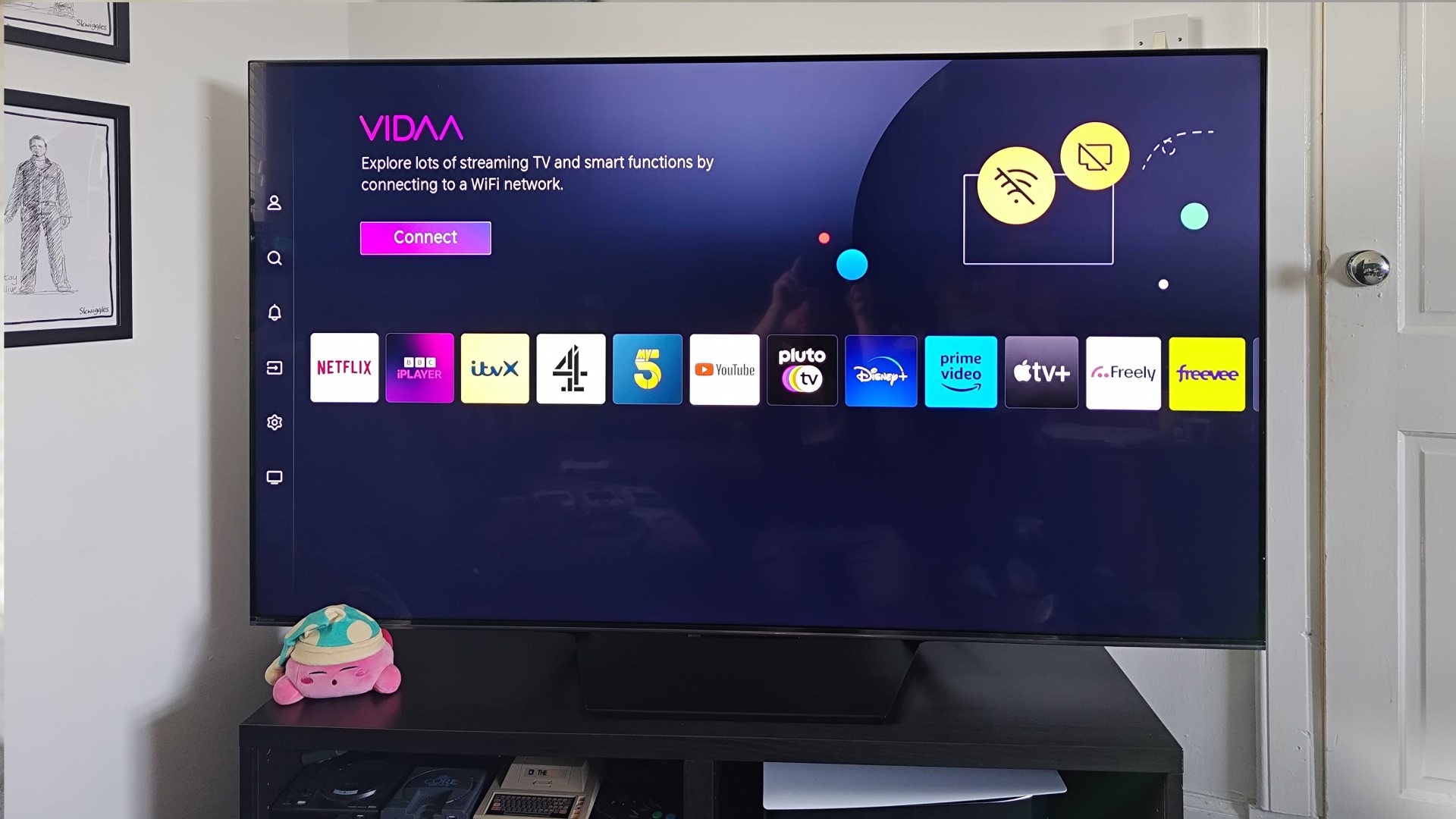
The U7N might be a mid-ranger, but Hisense hasn’t skimped on kitting it out with impressive specs. In honesty, I’m still surprised that 65-inch 144Hz screens like the one I'm testing are available at under $1,000 at all, as it feels like 120Hz 4K TVs were a significant investment just a few years ago. To quote Bob Dylan himself, the times they are a-changin', and we’ve reached a point where living room displays can rival gaming monitors without costing the world.
| Model | Available | Tested |
|---|---|---|
| Price | From $799 / £1,299 | $999 / £1,599 |
| Sizes | 55, 65, 77, and 83-inch | 65-inch |
| Panel type | mini LED | mini LED |
| Resolution | 3840 x 2160 (4K) | 3840 x 2160 (4K) |
| Refresh rate | 144Hz | 144Hz |
| HDR | Dolby Vision, HDR10, HLG, HGiG | Dolby Vision, HDR10, HLG, HGiG |
| VRR | Yes | Yes |
| HDMI 2.1 | Yes | Yes |
| Warranty | 1-year | 1-year |
What’s perhaps more impressive is that the U7N doesn’t drop the ball in including plenty of other perks alongside its punchy panel. Dolby Vision and Atmos audio capabilities are on standby to give movies and games a premium lick of paint, and HDR10+ certification will ensure accurate levels across supported content. If you’re worried about keeping things smooth, you’ll also be able to tap into Variable Refresh Rate (VRR) abilities and eliminate any high frame rate weirdness – something I end up missing on displays without it.
Hisense includes two HDMI 2.1 ports with the U7N, with the rest sticking with 2.0 standards. I don’t personally think that’s a biggie since most of you will likely only have a couple of devices that require the bandwidth. Those limitations may rear their head in the future if new systems like the Nintendo Switch 2 or PS5 Pro end up boasting faster refresh rates and resolutions, so just keep that in mind if you like to keep last and next-gen systems running in unison.
Design
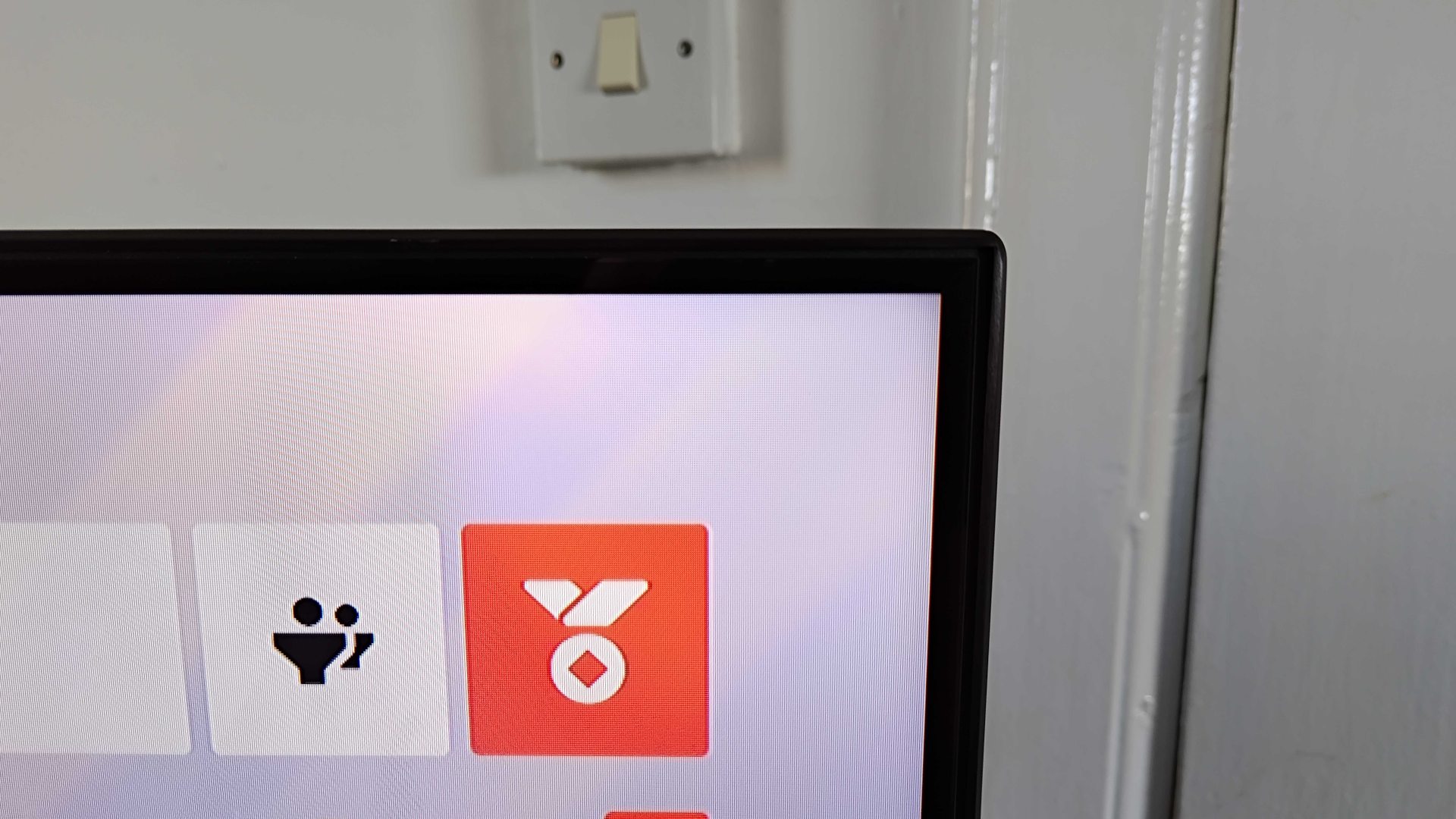
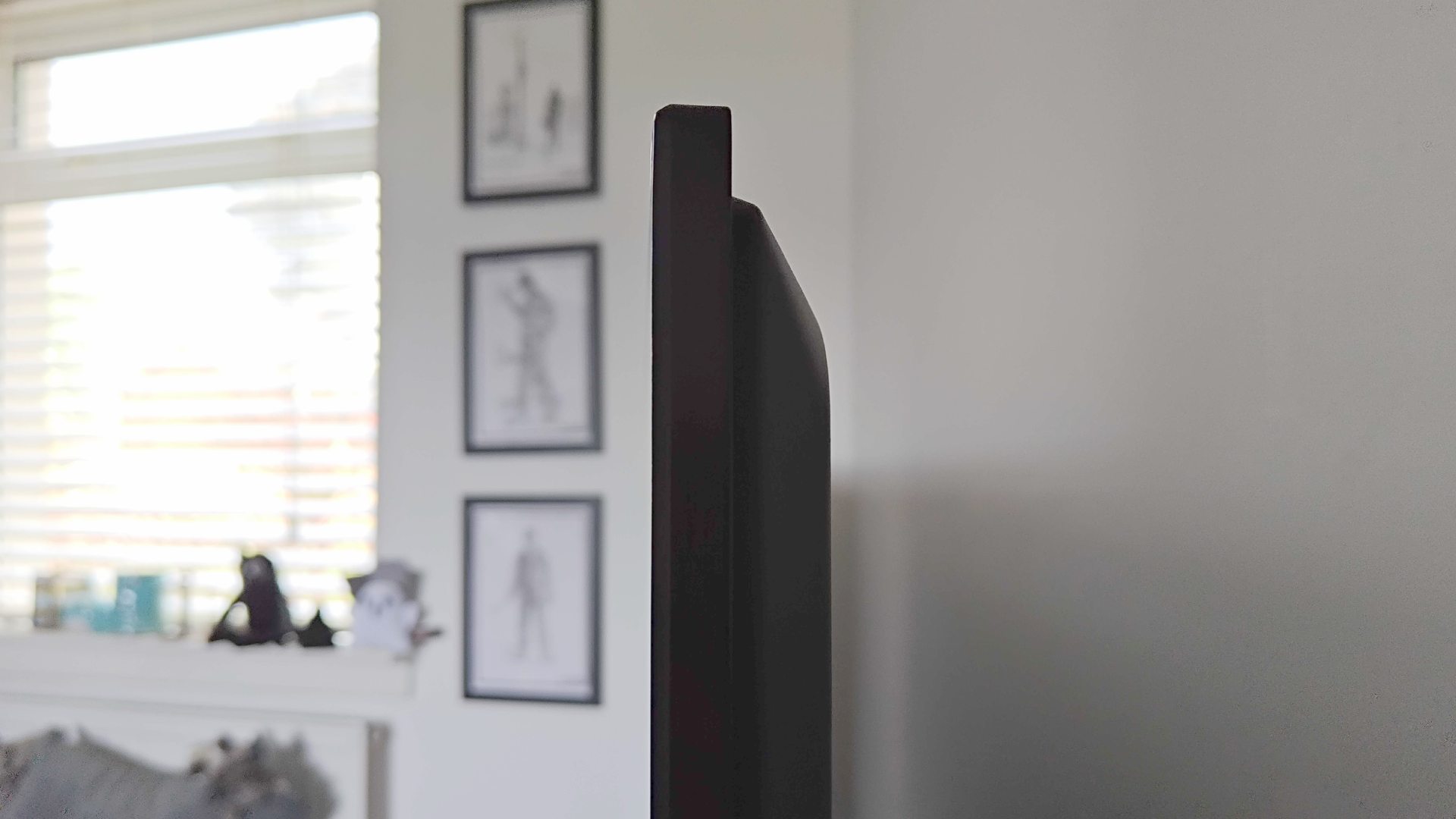
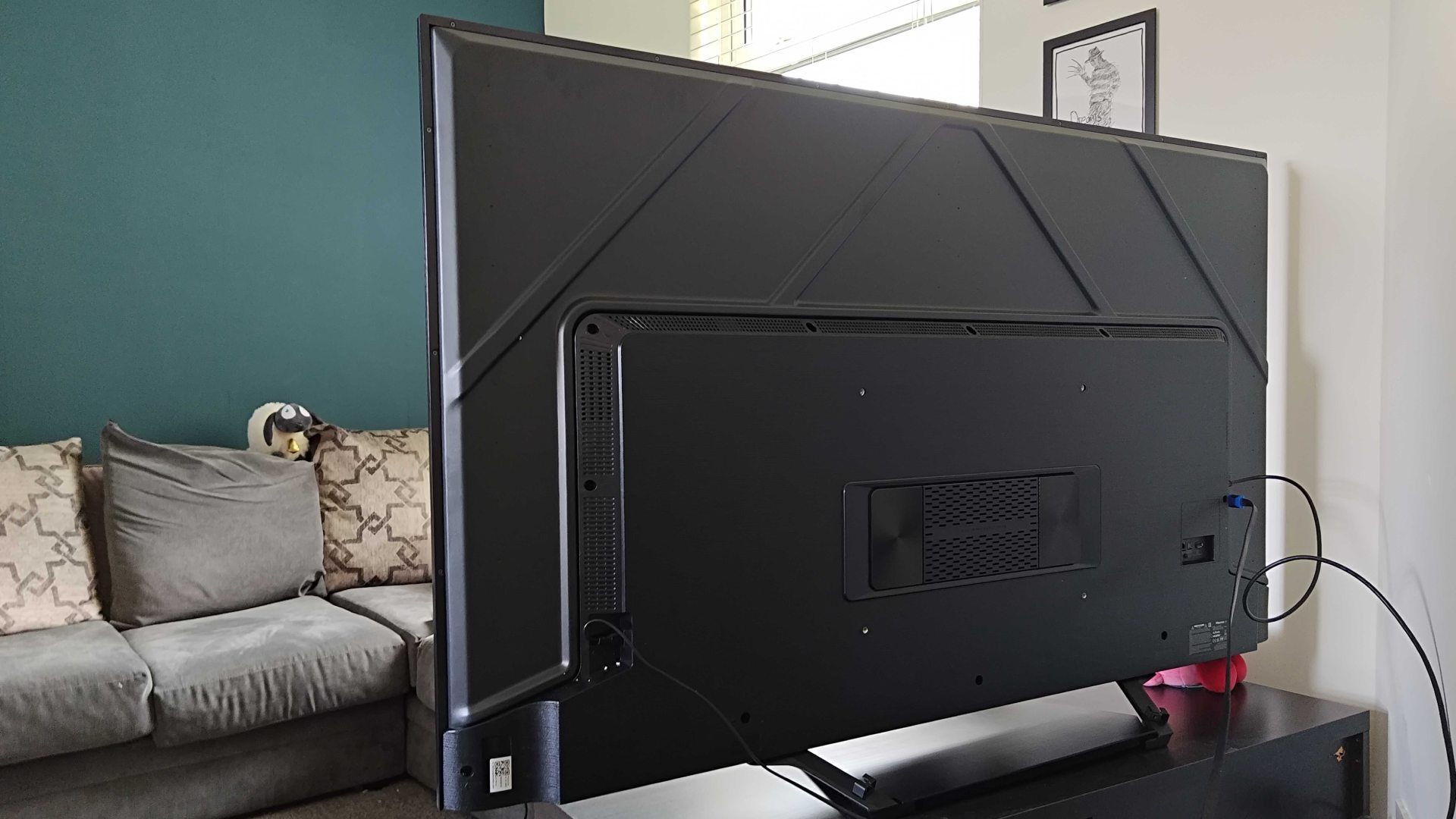
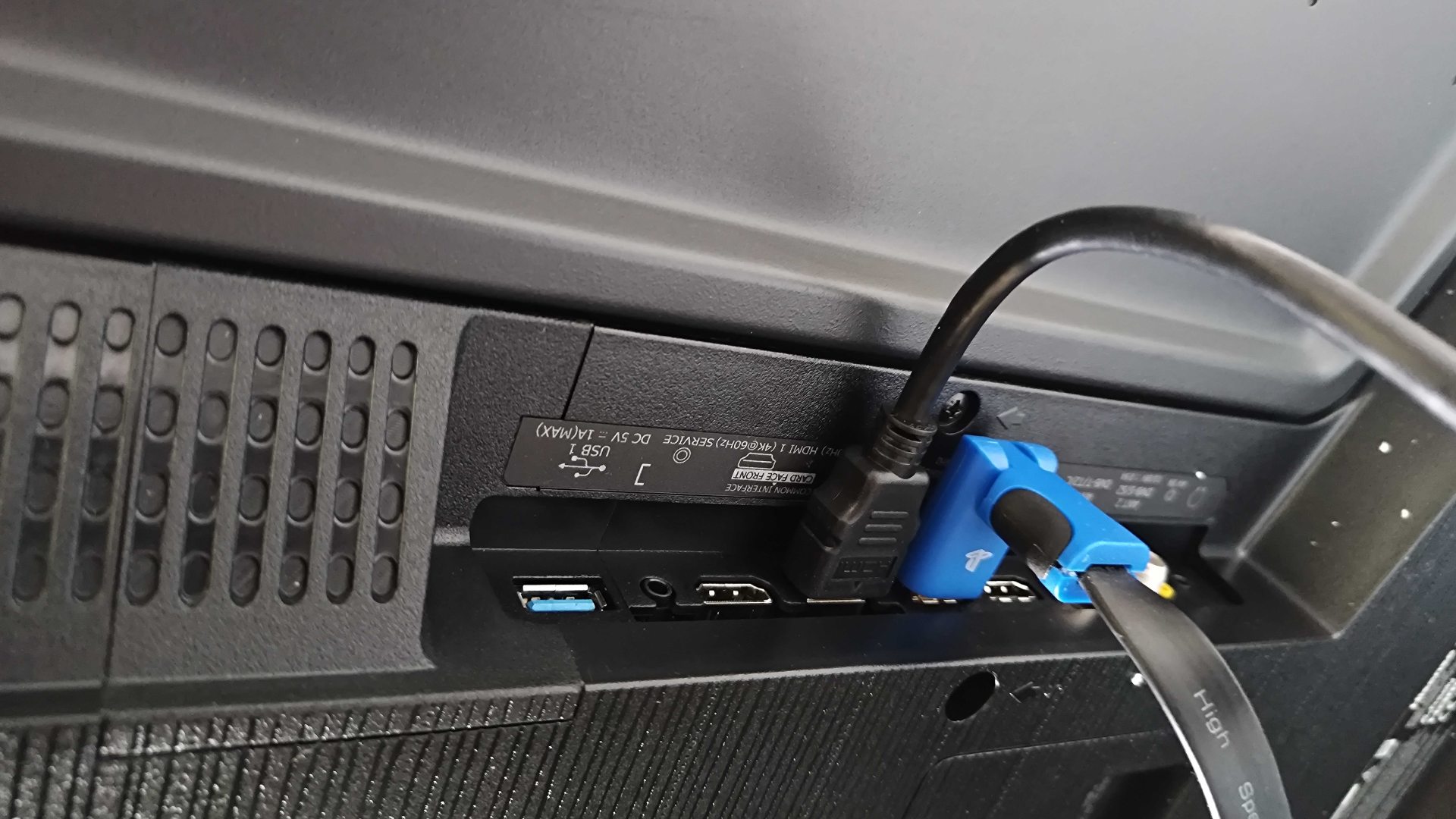
Entry to mid-range TVs are sometimes guilty of using too much plastic, but the U7N almost cosplays as a more expensive model. You’ll find that most of the back, bar some sections on the hump, are metal, which provides that sort of robust feel you’ll want when spending upwards of $800. The display also wears a lavish-looking silver frame that adds an elegant accent, but it’s a little thicker than the bezels you’ll find on premium panels. We’re talking millimeters of a difference, and I only really noticed since the wall behind my setup is white.
Hisense keeps the port layout simple with the U7N, as you’ll be able to access everything from the left-hand side of the TV. Annoyingly, the power connector is located at the complete opposite end on the right, meaning you’ll have to wrangle cables in both directions. You will be able to use two plastic clips on the back of the screen’s stand to funnel wires out of sight, but you’ll still need to provide your own cable management provisions to completely hide cords.
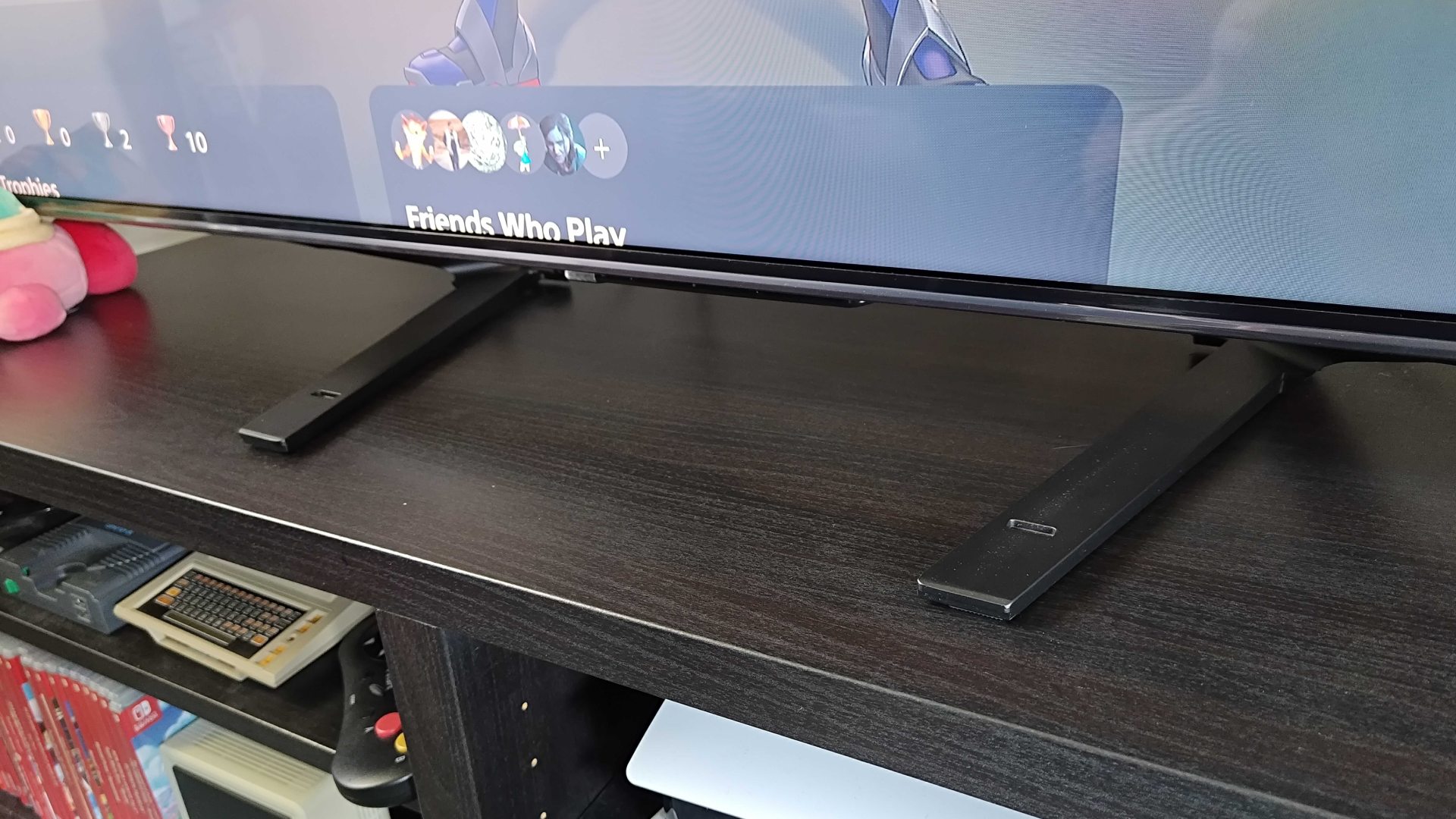
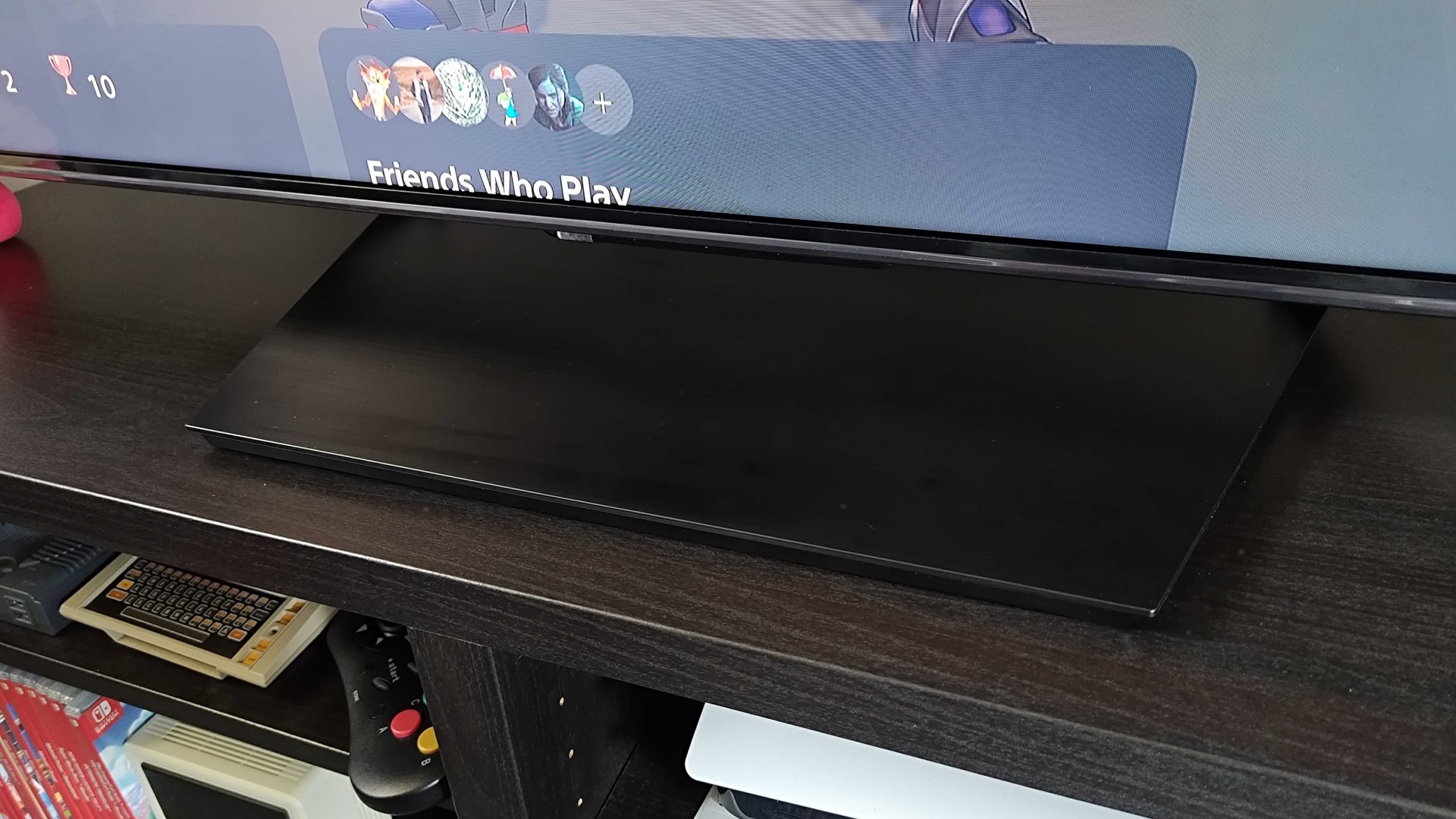
One sin the U7N commits that is tormenting me a little relates to its stand. Rather than keeping its feet out of the way to accommodate sound systems or even consoles, they stick out in front and come with a massive plastic facia to make them look like a wedge. Some soundbars may have enough clearance to slide over the hump, but options like the LG S95QRE simply aren’t going to fit. I completely get the appeal of a centralized pedestal, as it’ll save you picking up a new TV bench if you’re rocking something older, but this weird extra-large toenail approach isn’t demure. Isn’t cutesy.
Swinging back around to a more mindful design approach – the remote comes armed with USB-C and solar panel charging. Not to get all sentimental, but my late Granda always used to ask me why TV makers still forced us to use AA batteries when everything else is rechargeable, and I wish he was around to see this impressive channel flipper.
It’s about the same length as a Lightsabre hilt since it has that solar array at the bottom, and I’m not really a fan of having specific streaming service buttons on a remote that could vanish in 10 years. But, considering the OLED G4’s Magic Remote still uses disposable batteries, this remote manages to make that three grand TV’s buttons feel prehistoric.
Features
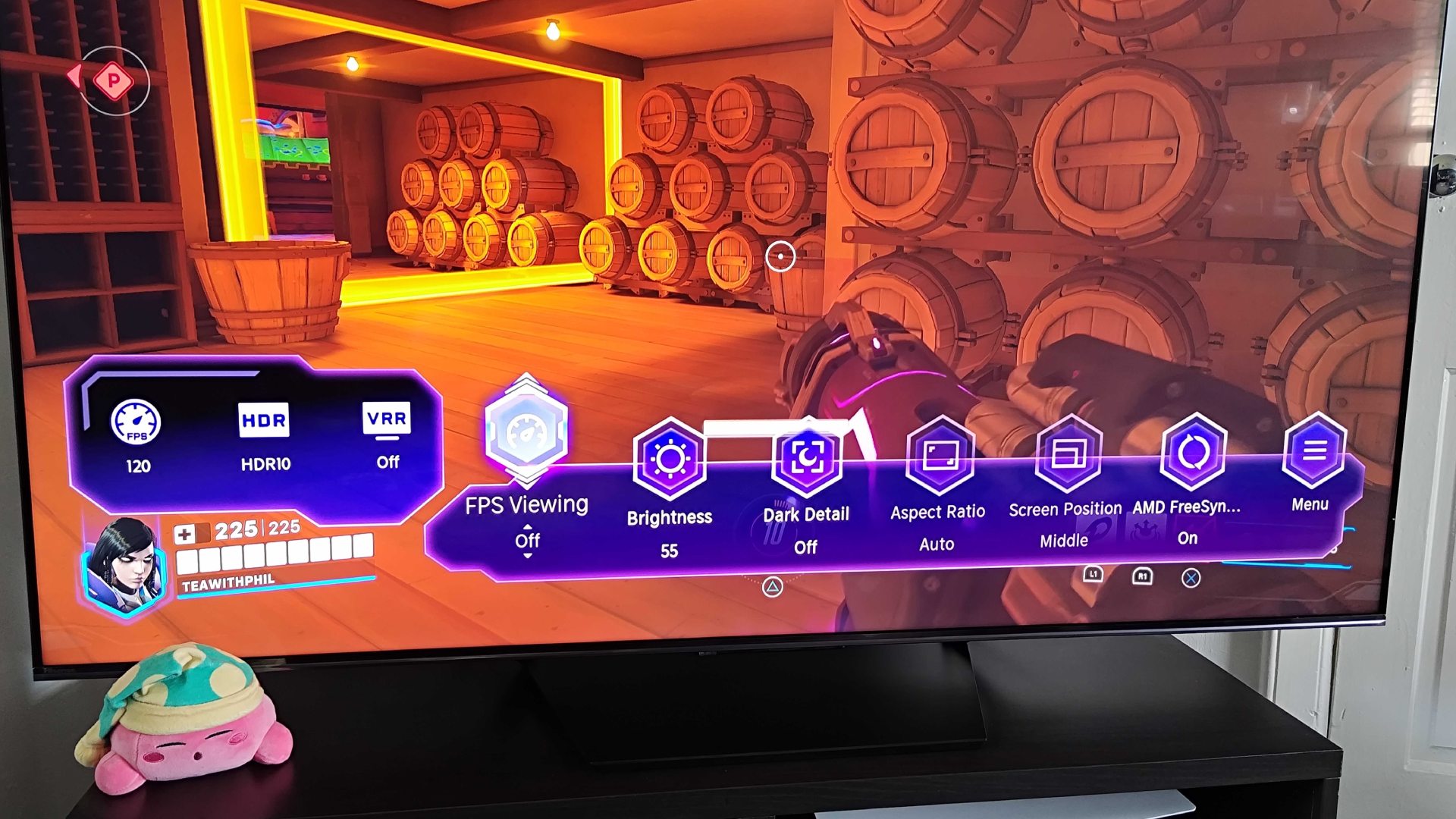
Just like most TVs that cater to gaming these days, the Hisense U7N comes with its own “Game Bar.” I’m mentioning this element first as it ties into most other features the screen has to offer, providing a speedy way to change crucial settings when using consoles and PCs.
Side by side, the Hisense’s dedicated gaming menu has virtually the same toggles as LG’s Game Bar, alongside indicators for VRR, HDR, and FPS. These are pretty invaluable, as even a seasoned hardware reviewer like myself can sometimes get HDMI cables mixed up and not realize they’re using an old HDMI 2.0 cord.
Yes, this did happen right after I’d just got all my wires organized, prompting me to re-discover the appropriate cable for my PS5. The result would have otherwise been not being able to use Variable Refresh Rate or hit 4K 120Hz, and the last thing you want is to realize you’ve not got either when all settled in for a gaming session. Another quick access setting I really appreciate is the AMD FreeSync toggle, as while some PC games can really benefit from the tech, others can feature weird artifacts as a result of upscaling.
Outside of gaming specifically, the U7N has a whole array of smart features that cater to streaming. For whatever reason, the UK model I’m testing uses Hisense’s own Vidaa OS while US screens make use of Google TV. For what it’s worth, the company’s own software holds up well in terms of navigation, layout, and search capabilities across apps. You’ll even be able to use Alexa or the TV’s own voice functions if you prefer hands-free.
Performance
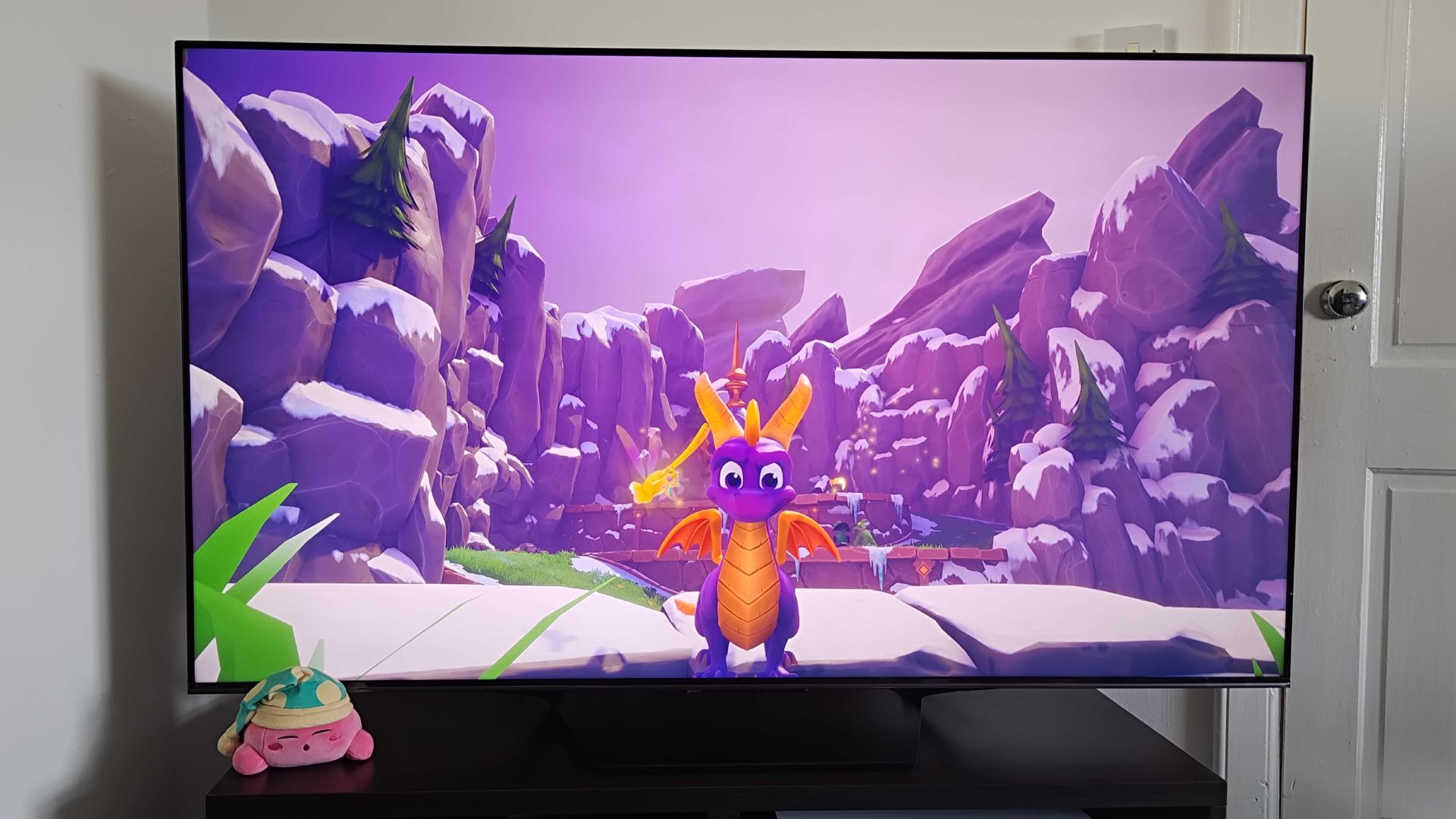
I’m used to using wildly fast screens these days courtesy of the gaming monitor world, so it’s safe to say I’m sensitive to playing games at 60Hz. Given enough time with slower refresh rates, I’d probably reacclimatize, but with the likes of the Hisense U7N providing up to 144Hz, I’d arguably never have to.
I’m also acutely aware that screens sometimes abandon other attributes to maximize speed. Therefore I went into my U7N testing sessions looking for a good balance between excellent colors, contrast, and sharpness alongside an elevated refresh rate. Sure, I already had an idea of the experience Hisense is capable of providing thanks to previous U7K experience, but with models like the LG OLED G4 raising the performance bar ever higher, I was curious to see whether this mid-range display could also go a step further.
Thankfully, the U7N has more than proven itself as a high-spec gaming TV, and a few visual gripes aside, it provides a great experience for the price. I spent an entire week testing the screen with high frame rate PS5 and PC scenarios and came out the other end feeling pretty satisfied with the results.
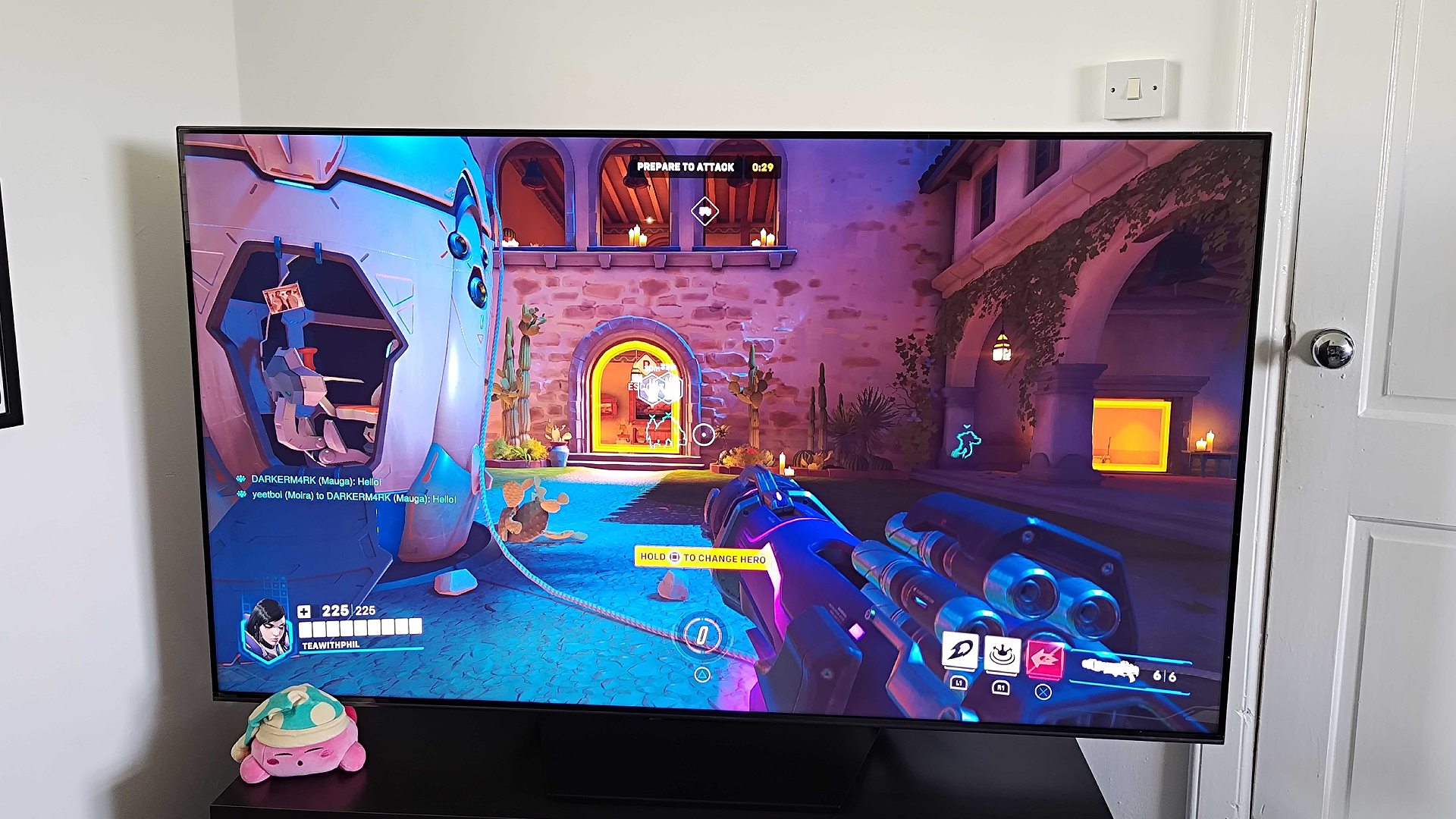
Let’s kick things off with Overwatch 2 on PS5, as the hero shooter demonstrates both U7N pros and cons. The console will automatically switch to 120Hz since that’s the most Sony’s system can manage, and it’s more appropriate anyway considering the game runs at 120fps. Or at least, it should do most of the time – the last update has somewhat made things a bit jittery at the start of matches.
That’s where VRR comes into play beautifully, especially since the switch from sub-60fps to 120 whenever performance picks back up is jarring. With the feature off, I felt quite distracted when I should have been psyching myself up to boost into action as Pharah. Switching Variable Refresh Rate on effectively masked the dip enough that I couldn’t immediately notice it was happening, stopping me from wanting to head upstairs and play on PC.
In play, the U7N provided the slick results I’d expect from a 144Hz screen. Pinballing back and forth using Pharah’s boost abilities was responsive and didn’t obscure my vision, meaning I was able to rapidly bombard the enemy team without any noticeable lag or blurring. One thing I did notice, however, was that Overwatch 2 didn’t look quite as sharp at 120Hz on Hisense’s TV compared to the OLED G4, in turn demonstrating the value of the more expensive chip doing the upscaling in LG’s premium model.
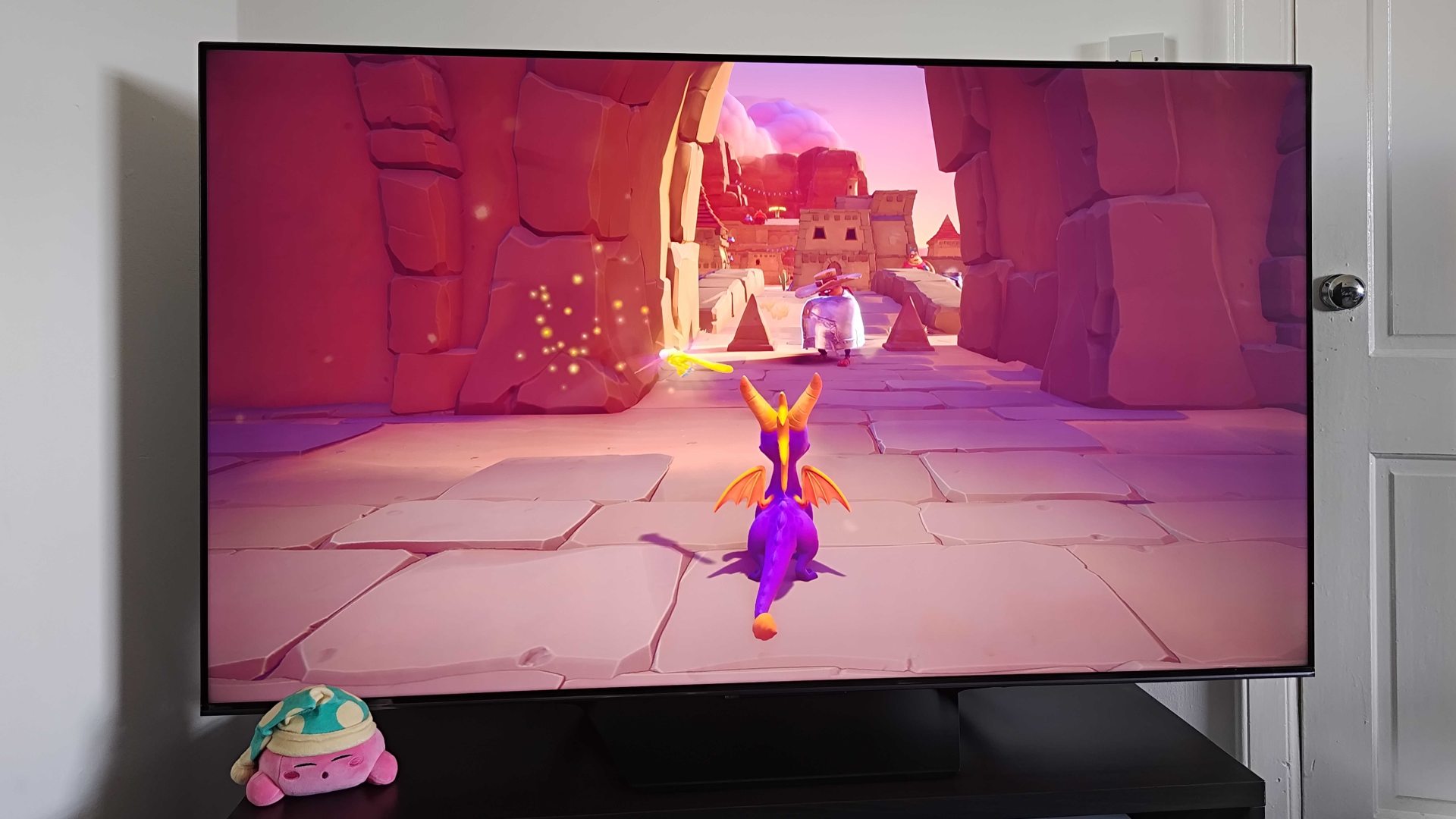
It’s been the best part of a year, but I’m still making my way through Spyro: Reignited Trilogy, which gave me a reason to use the remastered collection as a color test. Since we’re dealing with mini LED here, I was expecting contrast to take a major backseat but found that the U7N was pleasantly vibrant. Most of you out there won’t be jumping from having an OLED G4 to this cheaper Hisense option on your bench, and the results are even more impressive if you jump from a bog standard LED display to this screen.
Moving onto PC gameplay, and jumping into shooters like Halo Infinite feels sensational at 144Hz. There’s a debate to be had over whether using controllers with faster screens is as beneficial as using a high-polling gaming mouse, but I’d argue it’s likely what playing on future-gen consoles will feel like. Everything is just that bit more responsive at this refresh rate over 120Hz, and if you want to hook up your rig in the living room without spending a bomb, the U7N is a solid solution.
The U7N’s High Dynamic Range has somewhat improved compared to last year’s model, as it provides excellent brightness laced with decent color balance. I did still pick up on some washed-out tones with HDR switched on, and your mileage will still vary based on both what you’re playing/watching. For instance, games like Cyberpunk 2077 benefit from the feature, as it adds depth to Night City’s illuminated streets, whereas shows like Star Wars: The Acolyte end up looking a bit too muted.

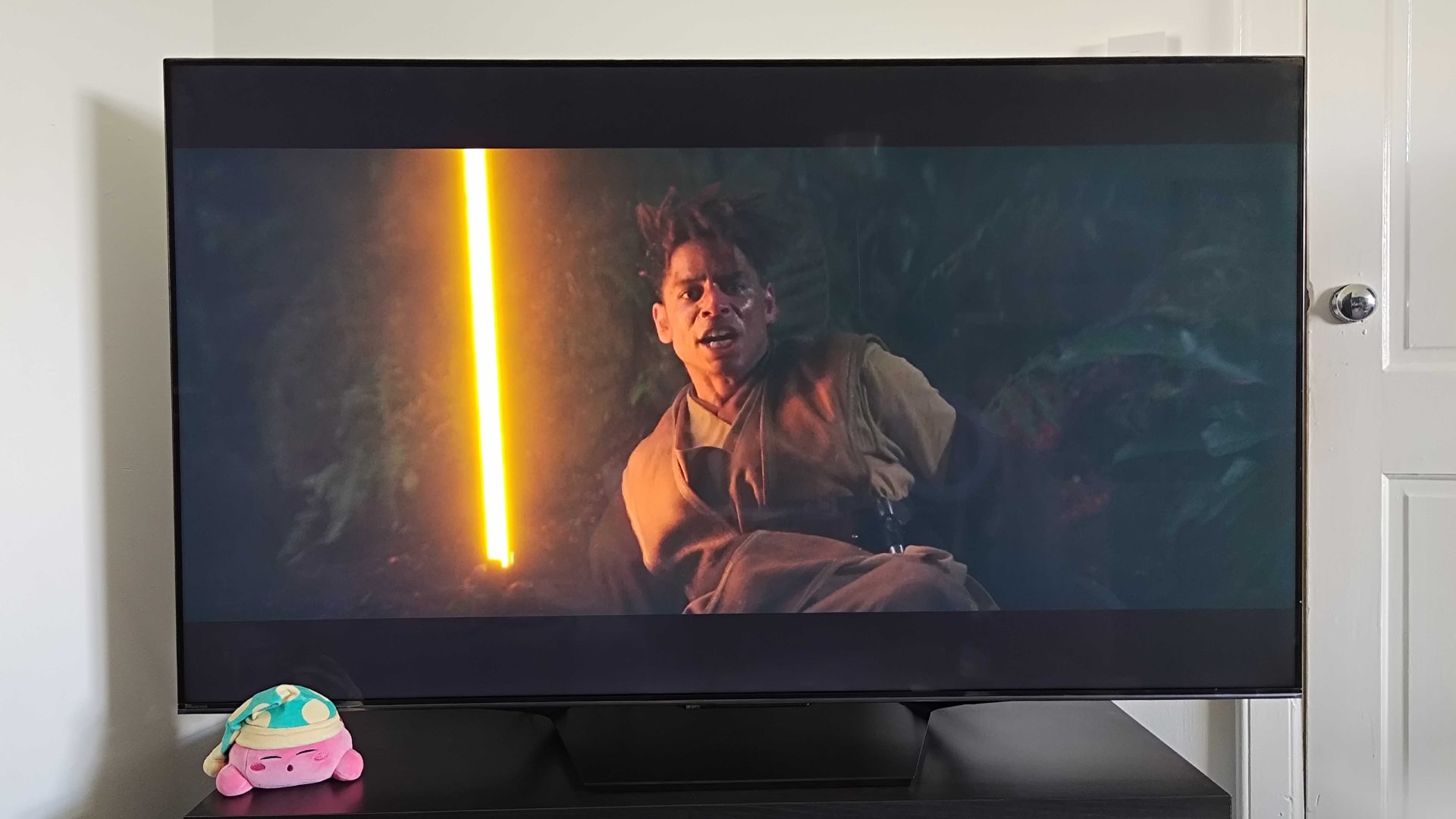
It’s worth noting that I did have to dial in some brightness and contrast settings myself to get things looking decent, especially with HDR enabled. All the default presets, including standard and HDR dynamic looked both blown out and a little hazy without manual intervention, but some adjustments got things looking the way they should.
Just like other mini LED panels, backlight blooming can also be an issue, especially when the backlight is cranked up. It’s not intrusive by any means, and I typically only spotted it with wider contrast variances, but it might get on your nerves if you’re looking for that distinct OLED look.
Audio
Built-in speakers are rarely anything exceptional, and I’d be lying if I said the U7N’s 40W setup was anything but average. I’ll take that over it being terrible or tinny, and Hisense’s integrated subwoofer is handy when trying to detect more subtle noises like footsteps in shooters. I normally play at lower volumes so as not to completely torment my neighbors with pew pew sounds, and while there’s a complete lack of detail when things aren’t cranked up, I could at least rely on the TV’s extra bass for some match-changing audio clues.
Should you buy the Hisense U7N?
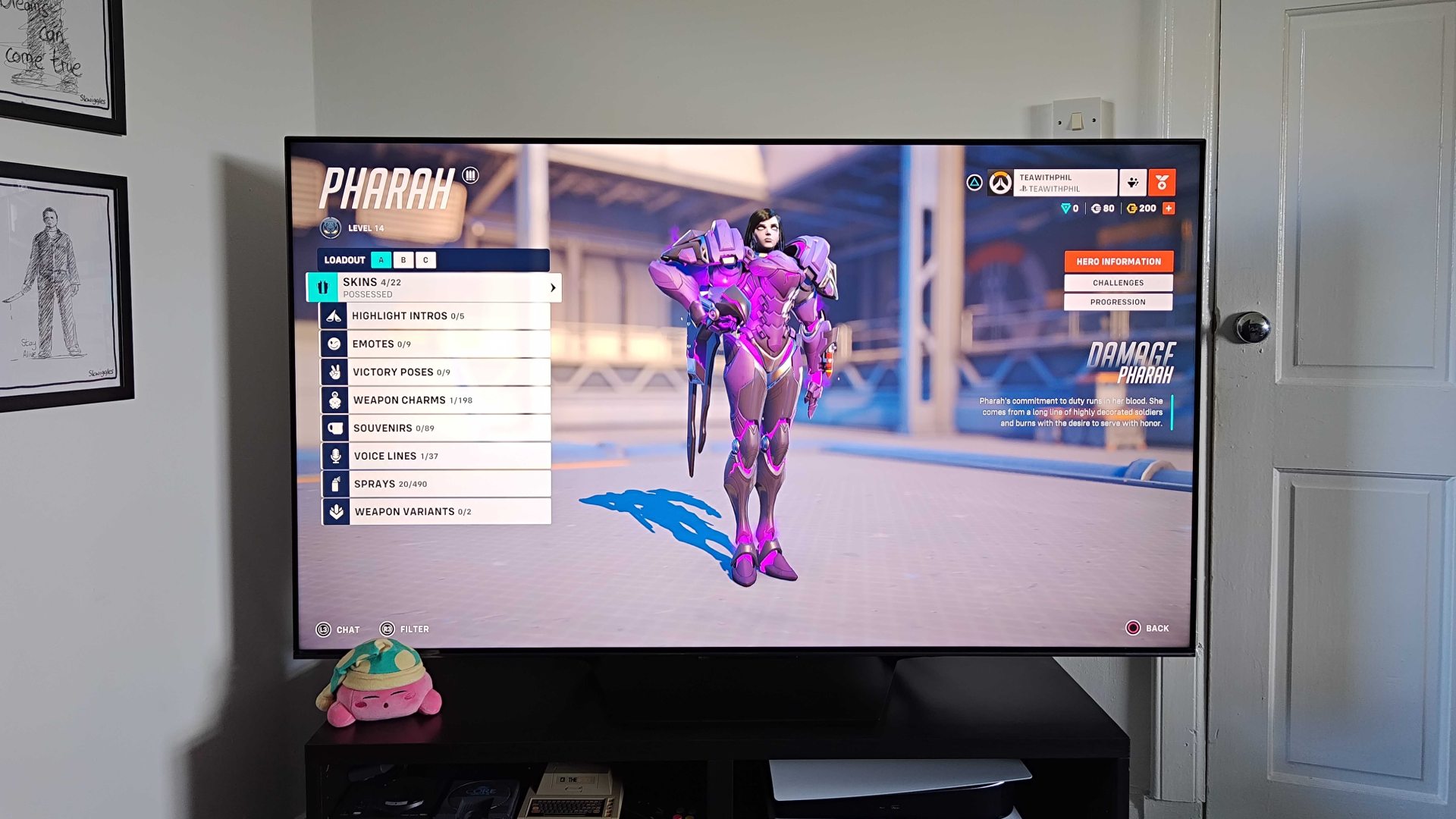
It’s hard to argue with what the Hisense U7N provides for its price tag, and it’s a mid-range mini-LED TV champ in terms of value. If you’re debating on adding a PC to your living room, or just looking for something that’ll serve the PS5 and beyond with speedy visuals, this panel will deliver excellent results that still look the part.
Put it this way, the 65-inch U7N comes in at under $1,000 and delivers the same 144Hz capabilities as something like the LG OLED B4 for a chunk less. Naturally, there’s more to it than that, and OLED panels still have the upper hand in terms of inky blacks and vibrant colors. If vibrancy matters to you among other subtleties, you might want to fork out more. However, most players are going to be pretty pleased with Hisense’s cheaper alternative, particularly if harnessing higher frame rates is a priority.
How I tested the Hisense U7N
Throughout testing, I used both a PS5 and PC to benchmark the U7N’s 144Hz refresh rate capabilities as well as assess its 4K mini LED visuals. During that time, I played games like Overwatch 2, Spyro: Reignited Trilogy, Cyberpunk 2077, and Halo Infinite alongside general use, taking comparative notes to see how it fairs against competitors and previous models. In addition, I also used apps like Disney+ to stream shows like Star Wars: The Acolyte to evaluate HDR performance.
For more information on how we test gaming TVs and other screen types, check out our GamesRadar+ Hardware Policy.
Looking for more displays? Check out the best TVs for PS5 and Xbox Series X and best QLED TVs for more options. Alternatively, swing by the best 4K gaming monitors for desktop-friendly panels.

I’m your friendly neighbourhood Hardware Editor at GamesRadar, and it’s my job to make sure you can kick butt in all your favourite games using the best gaming hardware, whether you’re a sucker for handhelds like the Steam Deck and Nintendo Switch 2 or a hardcore gaming PC enthusiast.
